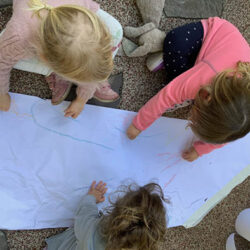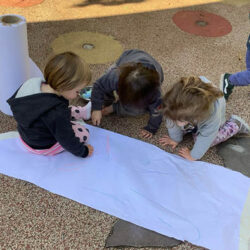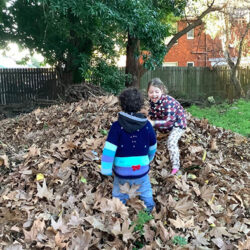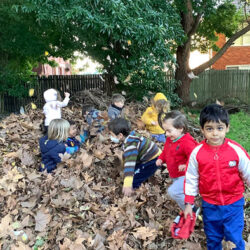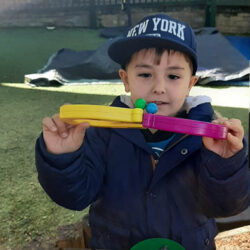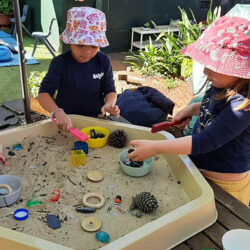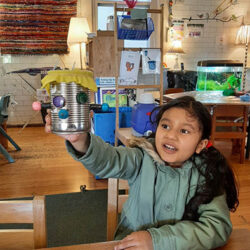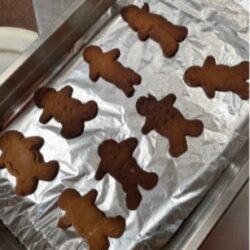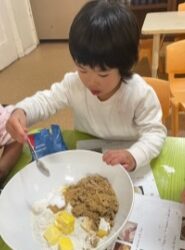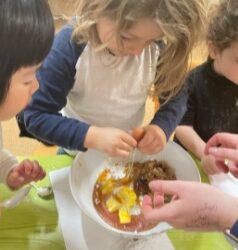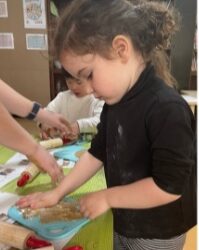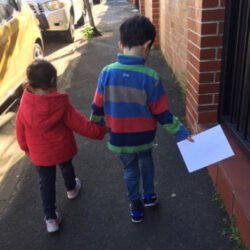Gorton House
Infants
Story by Educator Tracey
Recently some of the older Gorton House babies’ room children, who can now walk, have gone for mini-excursions into our spacious grounds with Chamani and another staff member. They have enjoyed being closer to nature and exploring the wider world of The Infants’ Home, while getting to exercise their gross motor muscles.
The children have also been enjoying stories, in particular ‘Dear Zoo’, a classic lift the flap book by Rod Campbell, in which several animals that are unsuitable to be kept as house pets, are sent back to the zoo, until finally the narrator receives a puppy which is kept. It is always a fun read which engages even the smallest of children.
We have also welcomed some new children to Gorton House babies’ room within the last two weeks. They have been amazing in how they have adapted to their new environment, and feeling confident enough to play, eat and sleep and to explore. We expect our new children to become familiar with and attached to one focus educator before they then form relationships with others. So far, they have taken to babies’ room like ducks to water. Well done, babies!
Toddlers
Story by Educator Isabella
The children in Gorton House toddlers have been enjoying sensory exploration, combining sight, sound and feel together, over the last couple of months.
It was a beautiful sunny day outside and what better way to spend it then doing a group sensory experience with the children? We set up large sheets of paper on the concrete floor outside, and the children used different coloured chalk to create various drawings on the paper, combining their creativity and sensory exploration together as I spoke with them about what they could see and feel.
At the conclusion of our sensory experience the children had the opportunity to share what they had drawn with their peers and what they would like to create next time.
Preschool
Story by Educator Nicky
The Gorton House preschoolers love to explore the grounds of The Infants’ Home, and the goose paddock continues to be one of their favourite places, with many requests for visits so they can play and explore, and observe and engage in the changes they notice as the seasons change.
The children walk to the space in anticipation, predicting and discussing what they may find—will all the fallen autumn leaves still be there? Will the grass still be long? This question of the long grass is quite exciting—they love that the lawn hasn’t been mowed for a little while. In their minds, the children imagine a jungle and pretend they are ferocious animals stalking through the grass searching for prey. Other times they try to run against the resistance of the long grass and finally collapse, their fall cushioned by the padding so much grass provides (the children are sincerely hoping it stays this way forever!). Some children learn how to navigate the tree in the far corner, while others gather to rest around a little makeshift ‘campfire’ which is a resting place built by the children from Robinson House. (The children’s wish is to have a real campfire in the goose paddock one day).
As we connect to this space, the goose paddock, we remind ourselves that we share this land now, and reflect on how we can show respect to this part of country, and to the Darug people, by striving to care for the land, and all its creatures, the way Darug people have for thousands of years. We wonder what it may have been like, all those years ago when it was just Darug, Wangal and Gadigal people living and playing on this land, as we do now. We know they spoke Darug, their own language that we in the preschool room acknowledge daily and try, with the permission of two Darug women, to respectfully learn and share. We discuss the plant and animal life, some native to the land—the KurrungDurrung (paperbark tree) Buru (Kangaroo) Wirriga (goanna) Dingu (dingo)—and others, like domestic cats and dogs and the huge liquid amber tree, that have been introduced.
We’ve come to this space often to read some stories about the experiences of First Nations People after the first fleet arrived—a lot of it wasn’t fair or good, and knowing this means that we can be aware of how decisions made by governments can affect people, and how being aware means that you can speak up for yourself or for others. Incidentally, I always find it interesting that it has been the children who have often chosen for these books to be read in the goose paddock, insisting we read them there. If we are going to the goose paddock, they often ask to take these books, in particular ‘Sorry Day’. I have always supported this… I often wonder if these requests are driven by the children’s knowledge of the importance of country to Aboriginal people, or if it is because it is a place that gives them such a sense of peace, or that it helps them feels closer to and connected to country themselves?
Johnson House
Preschool
Story by Educator Alisa
The children at Johnson House preschool have recently been interested in exploring magnets. A range of resources and experiences such as a magnetic sensory table, magnetic treasure hunt and loose parts to make robot magnets have been made available to children to continue their exploration.
In a tuff tray filled with sand, magnetic and non-magnetic objects were hidden beneath the sand. The children were given stick and horseshoe magnets to hunt for the objects that would stick to the magnets. As some of the children already knew that metallic objects would be attracted to the magnets, they pointed the magnets to the paper clips, bulldog clips and magnetic balls and chips. A child collected several of the magnetic objects, and as he lifted these up, he thought “It’s getting heavy! It’s because magnetic objects are made of metals. Metals are really heavy.” Some children also discovered that they could make new objects with the magnets, and other children tested out their peers’ new discovery by also making objects with the magnets.
This was further extended by creating robots using tin cans and a variety of magnetic pieces. The children attached metal balls to the tins for the eyes, stacked craft magnets together to use as arms and legs, and some magnetic sticks were used as strands of hair. When the magnetic balls seemed to come easily off the tins, I scaffolded children’s learning and modelled how they could use the craft magnets to stick the ball magnets to reinforce the attraction.
The children continued to learn about magnetism and the magnets’ attributes and properties through cause and effect. They continued to develop early mathematical skills, and sorted the objects according to their attributes and deduced their own theories on why some objects are attracted or not attracted to magnets. The magnets inspired the children’s creative imaginations as they created a range of robot magnets, and they also further developed their motor, thinking and problem-solving skills, as well as their engineering and design capabilities. Using loose parts for this type of play encouraged children to create as many robots as they could since the parts are easily movable.
Robinson House
Story by Occupational Therapist Lisa
Today was week seven of our cooking group in Robinson House. The children have recently enjoyed reading the Gingerbread Man story, so we decided to challenge ourselves today and follow a longer, shared recipe to make gingerbread.
After our check in and hello, we encouraged the children to look at the recipe to find out what equipment we would need. Today there were lots of different ingredients for us to try! As we took it in turns to mix the ingredients in the bowl, we looked at, smelt, and tasted each one. Some were even brave enough to try the bicarbonate of soda, and there was a resounding “yuck!” when some children tasted the ginger!
We used lots of fine motor skills today, including bimanual skills to roll the rolling pin and cut the butter, upper arm and shoulder strength to mix and knead the dough, and a pincer grasp to hold the gingerbread man cutter before pushing it down. These individual skills all contribute to the ability to independently complete tasks such as dressing, drawing, and using your arms and shoulders to participate in play such as catching a ball or climbing.
Family Day Care Sydney Wide
Story by Educator Support Officer Maureen
Siblings, 2.9-year-old Cami and 4.7-year-old Axel, have grandparents living in France. While attending Nicola’s Family Day Care service they recently enjoyed a project to engage in an intergenerational and overseas communication exchange.
Both children created art pieces, and Nicola also photographed the siblings engaging with their peers as they participated in learning experiences. They proudly prepared a package of their artworks and photographs in a large envelope and then walked to the local post office to mail the surprise all the way to their Mami and Papi in France. The children’s grandparents were so delighted to receive the surprise, which gave them an insight into their grandchildren’s lives here in Australia. I believe they shed a few tears of gratitude on receiving such a gift!
